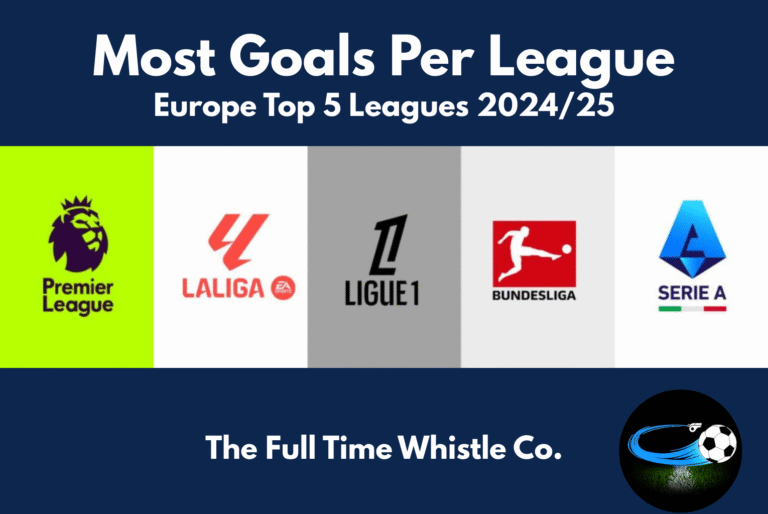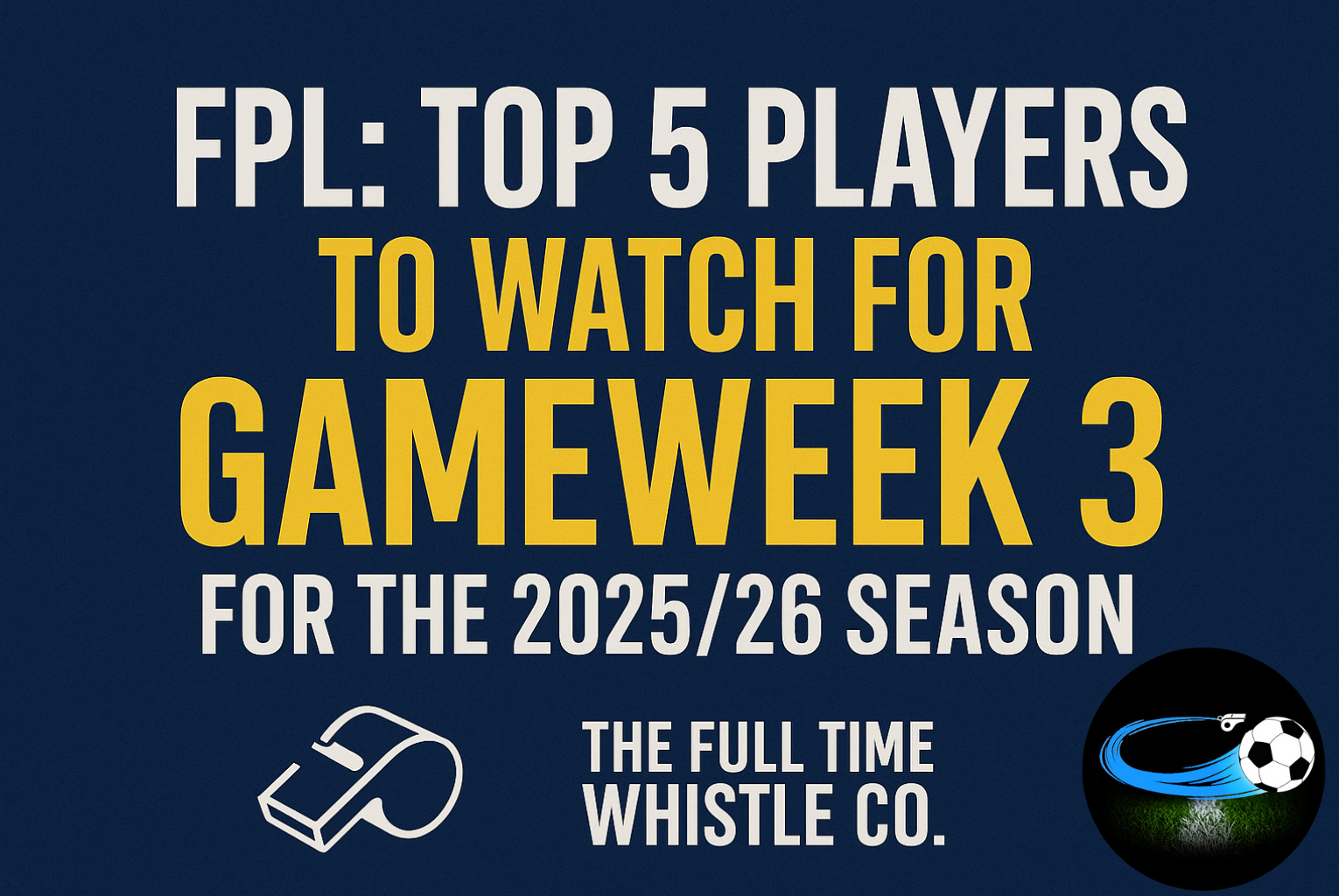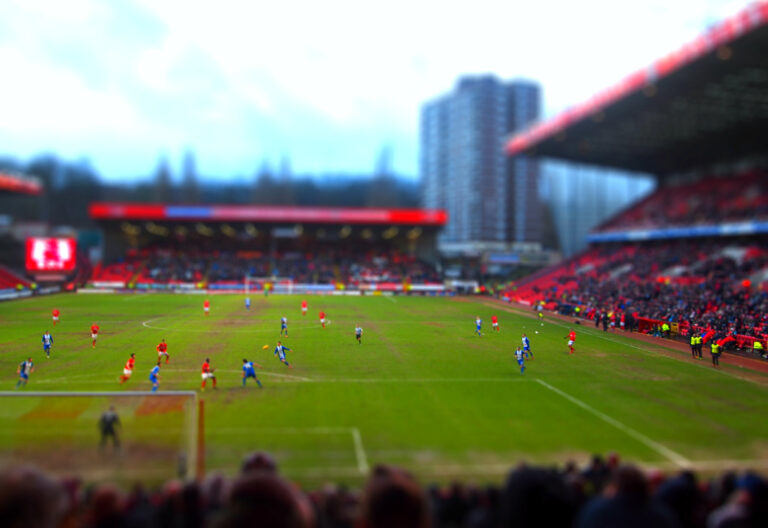
Pass maps are a tool in analysis that is gaining popularity in the world of football data analytics. Pass maps allow managers and coaches to understand how effective their team is with the ball while also understanding how their opposition is when they’re in possession.
Pass maps allow managers to set up their teams to play to their passing strengths and allow for setting up their team with a strategy to negate their opposition’s passing play.
The results of studying pass maps can reveal significant patterns in ball progression & possession play and it further helps managers prepare their teams to have an advantage over their opposition.
What Are Pass Maps?
Pass maps in football analytics are used to analyse the passing patterns of a team. These pass maps indicate various factors about a football team when it comes to their gameplay while in possession of the ball.
The position of the players are represented by a dot. The size of the dot depends on the number of touches, so more touches will mean a bigger dot.
When it comes to passes, the reading has to be pretty much the same. The thickness of the arrow represents more successful passes and more successful passes will result in a thicker arrow.
Basic Analysis Of Pass Maps
In football, knowing your opponents is just as important as knowing your team. Pass maps allow you to understand the passing patterns of your opposition. It shows you which area of the pitch they use the most for progressing the ball higher up the pitch.
A pass map is helpful as it answers a few questions and gives you a slightly clearer idea about the opposition’s ball movement.


Here we have Real Madrid’s pass map and players’ average positions from their game against Barcelona in 2020/21 El Clasico. Here we can see that Toni Kroos and Luka Modric have the thickest arrow between themselves as they are Real Madrid’s key players when it comes to manipulating the ball in the middle of the park.
The average positioning of the Real Madrid backline is quite deep, with their RCB (Militao) holding his deeper position with the LCB (Nacho) slightly higher. The front three with Valverde on the right and Vinicius on the left are in line with Benzema down the middle. However, if you look closely, Vinicius is slightly ahead of Benzema, providing the required verticality to the front line.
While the RM and RB are quite close, they also have a thicker arrow between them. Not only them two, but the arrow from the GK towards RCB is thicker than LCB. The density between the RCB and RB is also thicker compared to the other side. This shows us that while playing out from the back, Real Madrid tends to progress the ball through their right side.
This is an important thing to notice while analyzing this pass map because we are all aware of the fact that Real Madrid like to get the ball to Vinicius as much as they can. However, they also need to ensure that he is isolated when they get the ball to him.
As a result, they invite Barcelona’s players on the opposite wing and manipulate the ball on the right side among the likes of Modric, Valverde, Carvajal, and also Militao at times, who is a quality ball-playing center-back. With Real Madrid having world-class passers of the ball in the midfield, they have the ability to change the flank quickly and attack from the opposite wing.


Now, we will have a quick look at Barcelona’s average positions and pass map from the same game. Barcelona played a 3-4-3 against Real Madrid, which became a 3-2-4-1 as the game progressed. While Real Madrid had their thicker arrows right in the midfield, Barcelona’s thicket arrow is between their LCB (Lenglet) and LWB (Alba). They do have quite a few thicker arrows, but they are all square passes that are never really dangerous.
The only major and visible thick arrow in the midfield is the passage between the RDM (Busquets) and RW (Messi). As visible in the diagram, Barcelona struggled to play vertically, and Busquets and Messi combine to penetrate centrally. Positionally, Barca’s full-backs are also extremely high up the pitch playing almost as wingers in a 3-2-4-1.
All of Real Madrid’s front three were equally involved in the game; however, we can see how isolated Barcelona’s ST (Dembele) is. His average position is way beyond the players around him, indicating that he did not make enough penetrative movements to create space for the creative players in the middle.
How Do Pass Maps Help Football Managers?
As mentioned above, in football, knowing your opponents is just as important as knowing your team. Also, it’s equally important to work on your defensive shape as it is to work on your offensive tactics.
These pass maps give managers an idea about how their opposition could play, and it helps the managers to set up their team defensively for the respective game. For example, to set up against Real Madrid after looking at their pass map, it’s important not to get overwhelmed by what they are doing.
Their defensive line is deep which means playing through the lines and crossing from out wide after progressive build-up play could work. Also, leaving Vinicius isolated on the opposite flank could be a huge mistake. So as a manager, you would work on a shape that can help you to deal with Real Madrid’s danger man.
As for the Barcelona diagram, it’s visible where they are struggling. Their centre backs and full backs are extremely high up the pitch and their high line is something that can be targeted with swift counter-attacks with a longer ball over the top in behind the defence. While the space in behind their full-backs can also be exploited. When they lose the ball high up the pitch their opponents can counter incisively and do some damage.
So now you have a clearer idea for preparing to play against that Barcelona side.
Overall, pass maps are most commonly used to understand the opposition’s style of play in possession & help managers develop strategies to negate them and gain an advantage for their own teams.
Learn Football Analytics On Mad About Sports
Do you want to create pass maps and other analytical charts analysing various aspects of football yourself?
Mad About Sports are facilitating a couple of pro-level courses that delve deep into football analytics.
The courses will get you up and running in the detailed world of football analytics and can help you create interesting charts and visuals after learning a bit of Python coding in just 2 days!
In the courses, you will learn how to convert available data and translate them into interesting visual charts, and it’s a great way to begin your immersive journey in football analytics.
Mad About Sports have a 2-day Workshop on Football Analytics & also a Football Analytics Masterclass, which can help you kickstart your journey into football analytics.
Click this link to register for the 2-day Football Analytics Workshop: https://s.madaboutsports.in/ftwfaw
Click this link to register for the Advanced Football Analytics Masterclass: https://s.madaboutsports.in/ftwfam
Sign up and begin your journey into football analytics immediately.
Register now!






